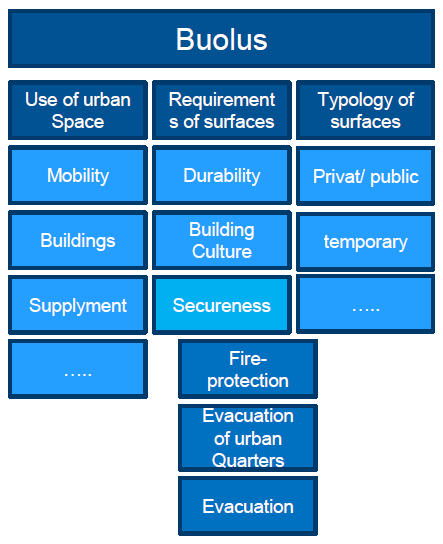BUOLUS
Building physics design of urban surfaces for sustainable quality of life and environment

The essential transformative fields of action of the cities include their structural-spatial design and urban land use. They are of particular importance for the sustainable development of both new and older cities as well as urban neighbourhoods, since they have a decisive influence on the quality of life and the environment, on the identity and the uniqueness as well as on the involvement of the local community. At the same time, there are strong interdependencies between the use and design of urban areas and other fields of action, such as resource and energy efficiency, climate resilience and the mobility and productivity of urban structures.
BUOLUS is a joint project of municipal and scientific institutions, urban planners and developers, construction companies and building material manufacturers in which the Technical University of Munich is involved with two sub-projects . The objective of the project is the holistic development, technological improvement and practical testing of the building physics-based potential of urban surfaces.
The TU Munich participates in the investigations and concepts for fire protection and evacuation scenarios in neighbourhoods and cities with regard to materials and design of urban surfaces on an urban planning scale. Additionally, it participates in the development of structures, target group- and application-oriented coordination, conception and design of cross-project knowledge transfer and application measures.
It is planned to develop essential new findings on the interaction of building physics-based requirements and fire protection in communities. Typological studies on acoustics, air pollution, fire protection, etc. in the communal context with the associated materials, which are common nowadays, will be included as well as suggestions for more suitable materials. In addition, new and superordinate concepts for the optimized physics-based urban planning are developed.
Communal decision-makers and actors, process participants and those affected, as well as institutions and authorities, public transport and property developers, commercial businesses/companies, research and educational institutions profit from the expansion of the scope for design of urban surfaces in terms of building physics. This allows, for example, long-term models and concepts of urban development to be updated and supplemented with options for action and solutions. This concerns both the mitigation of hot spots and the reduction of permanent loads.
For more information click here.